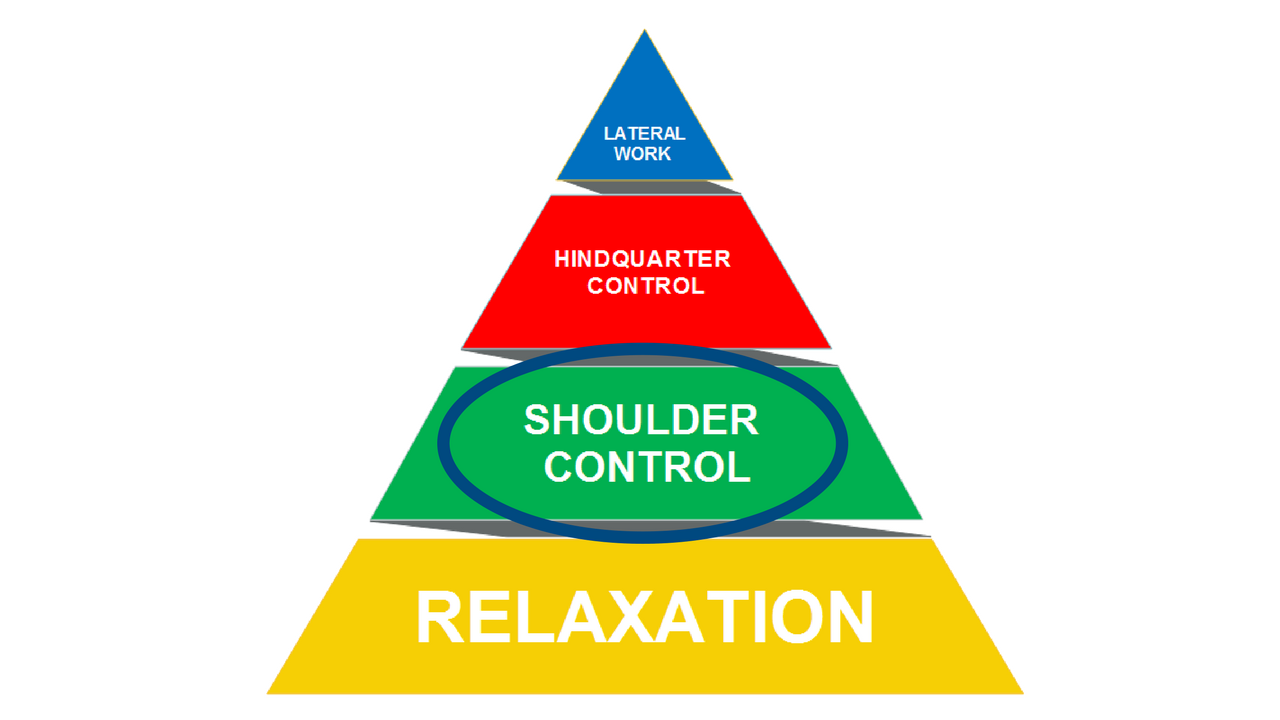
Relaxation encompasses softness in the bridle, shoulder elevation and travelling in-frame so now it's time to take control of the feet. Remember, we're always aiming to keep things really simple for both ourselves and the horse so we're only going to control one foot at a time.
Overcomplication, by trying to control all four feet at the same time right from the outset, is what ends a lot of riders in trouble. Every movement, from turning right to flying changes is initiated by one foot (of course, it's actually initiated from much higher up the leg but the foot is easy for us to see so we'll focus on that). Ultimately we want control of all four feet, independently of one another - we need to be able to move each foot on its own without affecting the others.
So, why start with the shoulders and not the hindquarters? If you look at some trainers, especially those that do a lot of ground-work, they do begin by moving the hindquarters. Just watch how the horses change direction when they are being worked on the ground. It usually involves disengaging the hindquarters, i.e. moving the hindquarters around the shoulders. Of course, this does have the desired effect, the horse is now facing the other way but it's not the most energy-efficient way of moving the horse and not what the horse would do if given the choice. This movement also makes it more difficult to see if the horse is stepping backwards or forwards - something that may not seem important to us initially but appears to be very meaningful to the horse.
Have a quick look on YouTube and you'll see lots of ground-work video with the horse turning to face the trainer by disengaging its hindquarters. Then go out to the paddock and watch your horses changing direction - they don't do that, they move their shoulders to change direction. Disengaging the hindquarter is hard work and not something horses chose to do on their own so therefore it's not something we want to be practising a lot, especially with a horse that may not be very fit. Starting with the shoulders makes it easier for the horse which means you can make it more fun!
The aim of shoulder control is to be able to move each front foot, or shoulder, left and right from each rein. This will give us independent (the hindquarters are simply following the shoulders) shoulder control. We need this before we address the hindquarters because in order to get independent hindquarter control we have to be able to stop the shoulders moving - ah-ha, makes sense, right?
Deciding which foot to move in order to change direction is not always something we consider when working our horses on the ground. Did you have a look at YouTube and compare your horses in the paddock? Leave me a comment below and let me know what you found.
If you'd like this series delivered directly to your inbox, click here.

